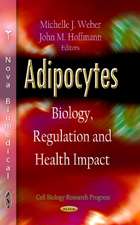Atlas of Skin Cancers: Practical Guide to Diagnosis and Treatment
Autor Ali Hendi, Juan Carlos Martinezen Limba Engleză Hardback – 28 ian 2011
| Toate formatele și edițiile | Preț | Express |
|---|---|---|
| Paperback (1) | 769.44 lei 6-8 săpt. | |
| Springer Berlin, Heidelberg – 23 aug 2016 | 769.44 lei 6-8 săpt. | |
| Hardback (1) | 730.92 lei 3-5 săpt. | |
| Springer Berlin, Heidelberg – 28 ian 2011 | 730.92 lei 3-5 săpt. |
Preț: 730.92 lei
Preț vechi: 769.39 lei
-5% Nou
139.86€ • 146.42$ • 115.73£
Carte disponibilă
Livrare economică 15-29 martie
Specificații
ISBN-10: 3642133983
Pagini: 120
Ilustrații: XII, 124 p.
Dimensiuni: 210 x 279 x 15 mm
Greutate: 0.79 kg
Ediția:2011
Editura: Springer Berlin, Heidelberg
Colecția Springer
Locul publicării:Berlin, Heidelberg, Germany
Public țintă
Professional/practitionerCuprins
Introduction.- Actinic Keratosis.- Non-Melanoma Skin Cancer.- Melanoma.- Miscellaneous Cutaneous Neoplasms.- Biopsy Techniques.- Complications of Skin Cancer Treatment.- Index
Recenzii
“The aim of this atlas is to enable the non-dermatology trained physician to identify those skin lesions that warrant a biopsy. … The atlas is well laid-out, makes good use of headings and is easy to read. The text is well written, in a clear understandable style for the non-specialist. … recommend this book to those involved in the management of patients with skin malignancy. It use will help to increase one’s diagnostic confidence and help to determine which patients may require a biopsy.” (Karin Baria, Oncology News, Vol. 7 (2), May/June, 2012)
Notă biografică
Dr. Hendi graduated, with honors (Cum Laude and Phi Beta Kappa), from the University of Miami with a degree in Microbiology and Immunology. In 1999, he received his Doctor of Medicine degree, with highest honors (Alpha Omega Alpha) from the University of Miami School of Medicine as a member of the accelerated Medical Scholars Program. He received his training in Internal Medicine and Dermatology at the University of Pittsburgh. Thereafter, he pursued fellowship training in Mohs and reconstructive surgery under the directorship of Drs. John A. Zitelli, and David G. Brodland, former presidents of the American College of Mohs Surgery (ACMS).
In 2004 Dr. Hendi joined the Department of Dermatology at Mayo Clinic in Jacksonville, Florida as the youngest faculty on staff. There he served as a skin cancer specialist and Mohs surgeon dedicated to providing exceptional service, research and resident education. As an Assistant Professor of Dermatology, Dr. Hendi was the primary investigator of two research projects, with implications on melanoma diagnosis and wound healing. Dr. Hendi has published over 20 peer-reviewed articles and book chapters. His most recent book, the Atlas of Skin Cancers, will be published by Springer Medical Publishing in 2010. He serves as a reviewer for the journal Dermatologic Surgery. He is a frequent speaker at national and international meetings and the inventor of the Hendi-Frazier, and Hendi-Roth skin hooks.
Dr Martinez grew up in Tampa, FL. He received his undergraduate degree at Dartmouth College, his medical degree at Mayo Clinic School of Medicine, his dermatology training at Duke University Medical Center, and completed his fellowship in Mohs Surgery and Procedural Dermatology at the Oregon Health & Science University. He is currently a Mohs surgeon and cutaneous oncologist in the Department of Dermatology at the Mayo Clinic in Florida. Dr Martinez specializes in the management of skin cancer and has particular interests in high risk squamous cell skin cancer, cutaneous oncology in transplant patients, and in surgical reconstruction of Mohs defects. In his personal time, he enjoys spending time with his wife and two young children.
Textul de pe ultima copertă
The incidence of skin cancer has risen rapidly in recent decades, and patients often present initially to practitioners in many different specialties. Because skin cancer can vary in clinical appearance, even dermatologists may experience difficulty in reaching a clinical diagnosis. For primary care physicians and physician extenders (physician assistants, nurses, and nurse practitioners), who have had very little or no formal training in dermatology, the task can be still more daunting. In this atlas, the authors set out to provide a practical resource that will help improve the 'visual vocabulary' of physicians and physician extenders, helping them identify lesions that should be biopsied. Hundreds of high-quality color images are included to assist the reader in the task of recognition and identification. All of the common cutaneous malignancies are illustrated, with a number of examples of each entity and of common mimickers. In addition, biopsy techniques and treatment options are presented in step-by step detail with the use of high resolution clinical images, and potential complications of treatment are discussed. This atlas is ideal for all providers who wish to sharpen their clinical acumen and gain confidence in identifying skin cancers.
Caracteristici
Descriere
The incidence of skin cancer has risen rapidly in recent decades, and patients often present initially to practitioners in many different specialties. Because skin cancer can vary in clinical appearance, even dermatologists may experience difficulty in reaching a clinical diagnosis. For primary care physicians and physician extenders (physician assistants, nurses, and nurse practitioners), who have had very little or no formal training in dermatology, the task can be still more daunting.In this atlas, the authors set out to provide a practical resource that will help improve the 'visual vocabulary' of physicians and physician extenders, helping them identify lesions that should be biopsied. Hundreds of high-quality color images are included to assist the reader in the task of recognition and identification. All of the common cutaneous malignancies are illustrated, with a number of examples of each entity and of common mimickers. In addition, biopsy techniques and treatment options are presented in step-by step detail with the use of high resolution clinical images, and potential complications of treatment are discussed. This atlas is ideal for all providers who wish to sharpen their clinical acumen and gain confidence in identifying skin cancers.


















